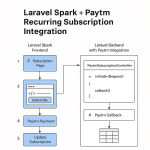Limited Time Offer!
For Less Than the Cost of a Starbucks Coffee, Access All DevOpsSchool Videos on YouTube Unlimitedly.
Master DevOps, SRE, DevSecOps Skills!
Here are some steps you can take to prevent DDoS attacks on a WordPress-powered website:
- Use a Content Delivery Network (CDN): A CDN can help absorb the traffic from the attack and distribute it across multiple servers, reducing the impact on your website. Some popular CDNs for WordPress are Cloudflare, Akamai, and Amazon CloudFront.
- Install a Firewall: A firewall can help protect your website from common DDoS attacks. There are several firewall plugins available for WordPress, such as Wordfence and Sucuri.
- Enable DDOS Protection: You can enable DDoS protection on your web server, which will help detect and block DDoS attacks. Some web hosting providers offer DDoS protection as part of their service.
- Disable XML-RPC: XML-RPC is a feature in WordPress that can be used to send requests to the server, which can be exploited by attackers. You can disable XML-RPC by adding the following code to your website’s .htaccess file:
- Limit Login Attempts: Limiting the number of login attempts can prevent brute-force attacks on your website. You can use a plugin like Login Lockdown to limit login attempts.
- Keep WordPress Updated: Keeping WordPress, plugins, and themes updated can help prevent vulnerabilities that can be exploited by attackers.
- Use a Strong Password: Use a strong and unique password for your WordPress login. You can also use a password manager to generate and store passwords.
- Enable Two-Factor Authentication: Two-factor authentication adds an extra layer of security to your WordPress login. You can use a plugin like Google Authenticator to enable two-factor authentication.
- Monitor Your Website: Regularly monitoring your website for unusual traffic patterns and server load can help detect DDoS attacks early. You can use a tool like Google Analytics to monitor your website’s traffic.
# Block WordPress xmlrpc.php requests
<Files xmlrpc.php>
order deny,allow
deny from all
</Files>



